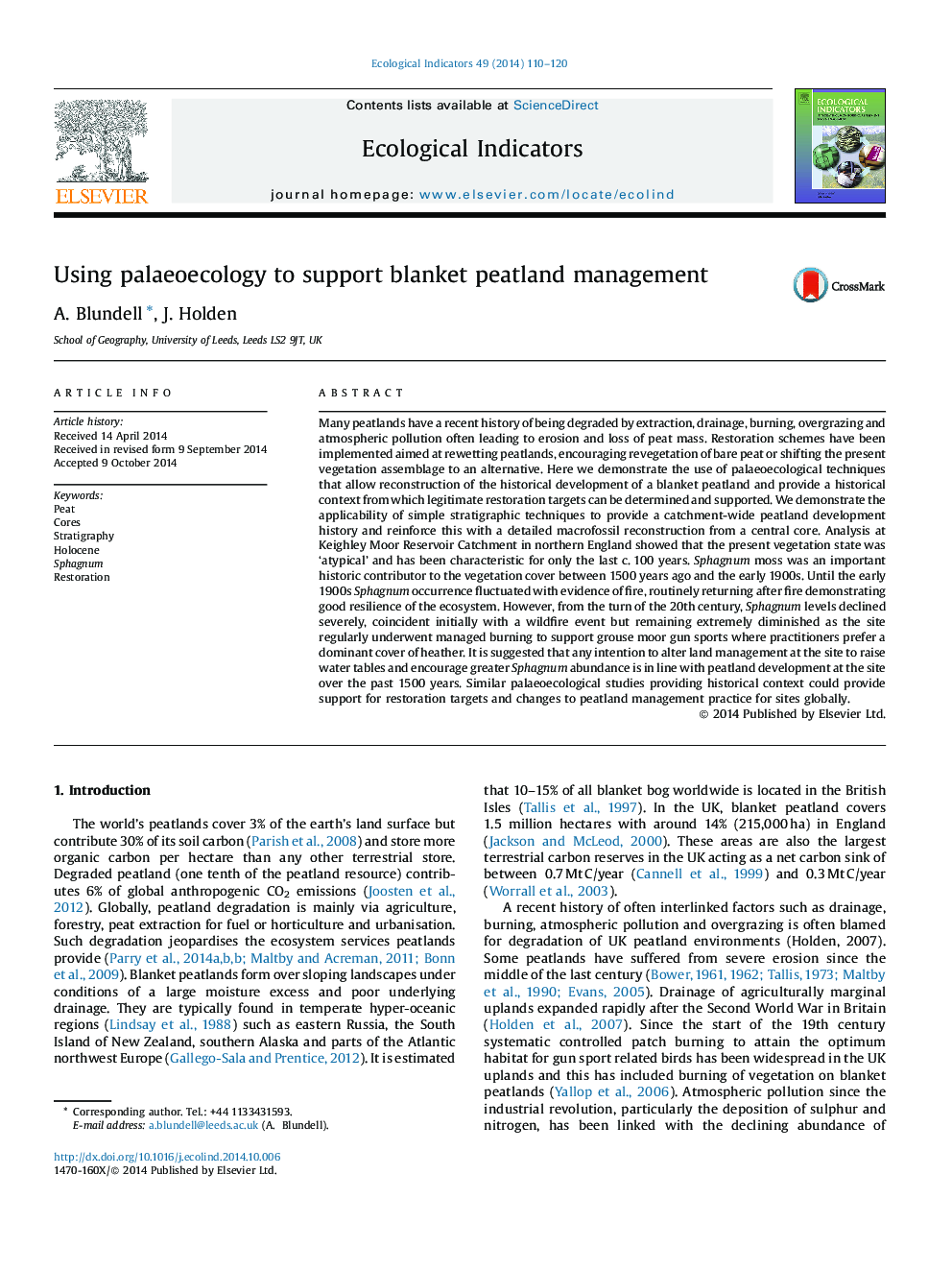| کد مقاله | کد نشریه | سال انتشار | مقاله انگلیسی | نسخه تمام متن |
|---|---|---|---|---|
| 6294795 | 1617152 | 2015 | 11 صفحه PDF | دانلود رایگان |
عنوان انگلیسی مقاله ISI
Using palaeoecology to support blanket peatland management
ترجمه فارسی عنوان
با استفاده از پالئوسکوئولوژی برای حمایت از مدیریت زمین شناسی پتو
دانلود مقاله + سفارش ترجمه
دانلود مقاله ISI انگلیسی
رایگان برای ایرانیان
کلمات کلیدی
ذغال سنگ نارس، هسته، چشمانداز هولوسن، اسپانیایی، ترمیم،
موضوعات مرتبط
علوم زیستی و بیوفناوری
علوم کشاورزی و بیولوژیک
بوم شناسی، تکامل، رفتار و سامانه شناسی
چکیده انگلیسی
Many peatlands have a recent history of being degraded by extraction, drainage, burning, overgrazing and atmospheric pollution often leading to erosion and loss of peat mass. Restoration schemes have been implemented aimed at rewetting peatlands, encouraging revegetation of bare peat or shifting the present vegetation assemblage to an alternative. Here we demonstrate the use of palaeoecological techniques that allow reconstruction of the historical development of a blanket peatland and provide a historical context from which legitimate restoration targets can be determined and supported. We demonstrate the applicability of simple stratigraphic techniques to provide a catchment-wide peatland development history and reinforce this with a detailed macrofossil reconstruction from a central core. Analysis at Keighley Moor Reservoir Catchment in northern England showed that the present vegetation state was 'atypical' and has been characteristic for only the last c. 100 years. Sphagnum moss was an important historic contributor to the vegetation cover between 1500 years ago and the early 1900s. Until the early 1900s Sphagnum occurrence fluctuated with evidence of fire, routinely returning after fire demonstrating good resilience of the ecosystem. However, from the turn of the 20th century, Sphagnum levels declined severely, coincident initially with a wildfire event but remaining extremely diminished as the site regularly underwent managed burning to support grouse moor gun sports where practitioners prefer a dominant cover of heather. It is suggested that any intention to alter land management at the site to raise water tables and encourage greater Sphagnum abundance is in line with peatland development at the site over the past 1500 years. Similar palaeoecological studies providing historical context could provide support for restoration targets and changes to peatland management practice for sites globally.
ناشر
Database: Elsevier - ScienceDirect (ساینس دایرکت)
Journal: Ecological Indicators - Volume 49, February 2015, Pages 110-120
Journal: Ecological Indicators - Volume 49, February 2015, Pages 110-120
نویسندگان
A. Blundell, J. Holden,
